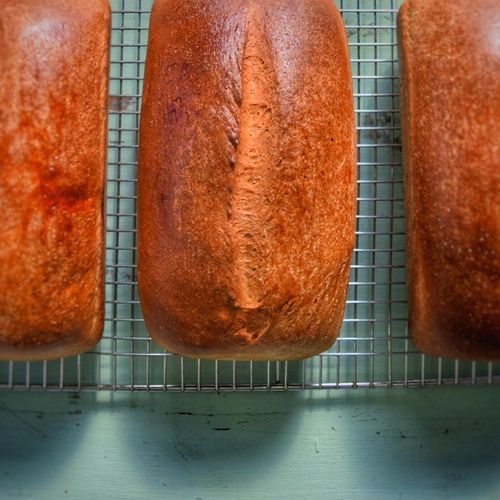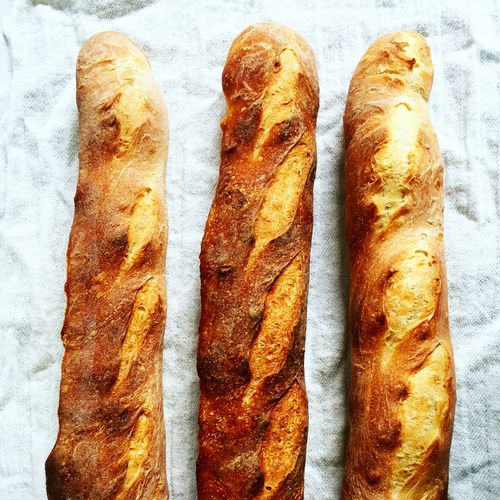Popular on Food52
Continue After Advertisement
10 Comments
SophieL
May 1, 2016
My newest favorite is Penzey's Pie Spice - I've added it to recipes that call for cinnamon, as well as to my morning oatmeal, box cake/cookie mix, and sour cream to dip strawberries. Other Penzey's favorites are their herb blends especially Sunny Paris, Mural of Flavors, and Tuscan Sunset. A sprinkle to most everything I cook just elevates the dish.
plevee
April 25, 2016
KAF's Fiore de Sicilia - much more than a mix of lemon and vanilla, it takes cream cheese frosting to a new level and is also good wherever you would use vanilla. It is strong, so use ~ half as much as you would vanilla.
BeckinBigD
May 11, 2016
This is one of my absolute favorite flavorings. Very strong, a little goes a long way, but oh so delicious!
AntoniaJames
April 25, 2016
At the risk of drawing the ire and snarky comments of those Food52'ers who have criticized me for posting long comments, I share this tip, in a spirit of helpfulness.
One of my favorite non-artisanal whole wheat bread recipes, from the great British bread expert, Dan Lepard, calls for half a 500 mg Vitamin C tablet - ascorbic acid, of course. It's readily accessible, and it works!
Lepard explains: "All wheat flour contains a naturally occurring chemical called glutathione in the starch, which is used by the seed as it sprouts and grows into a plant. But when we try to bake with wheat flour, the same chemical also stops some of that elastic stretchiness we want in the dough. If you use all white flour, the effect of this chemical isn't so noticeable. But change to wholemeal flour, which contains much less starch, and the effect can cause a heavy loaf.
Vitamin C has a way of stopping this chemical causing mischief. It's one of the few additives allowed in organic baking by the Soil Association, and even the protective French baking laws approve of a little being added. You only need a smidgeon, so a half or even a quarter of a vitamin tablet will do, but it will help to make your bread light."
I highly recommend this: http://www.theguardian.com/lifeandstyle/2007/nov/24/foodanddrink.baking13
;o)
One of my favorite non-artisanal whole wheat bread recipes, from the great British bread expert, Dan Lepard, calls for half a 500 mg Vitamin C tablet - ascorbic acid, of course. It's readily accessible, and it works!
Lepard explains: "All wheat flour contains a naturally occurring chemical called glutathione in the starch, which is used by the seed as it sprouts and grows into a plant. But when we try to bake with wheat flour, the same chemical also stops some of that elastic stretchiness we want in the dough. If you use all white flour, the effect of this chemical isn't so noticeable. But change to wholemeal flour, which contains much less starch, and the effect can cause a heavy loaf.
Vitamin C has a way of stopping this chemical causing mischief. It's one of the few additives allowed in organic baking by the Soil Association, and even the protective French baking laws approve of a little being added. You only need a smidgeon, so a half or even a quarter of a vitamin tablet will do, but it will help to make your bread light."
I highly recommend this: http://www.theguardian.com/lifeandstyle/2007/nov/24/foodanddrink.baking13
;o)
Matilda L.
April 25, 2016
But I love reading your long, helpful comments, AntoniaJames! I'm always up for learning something new and your words deliver.
AntoniaJames
April 25, 2016
I recommend his roasted cocoa cookies, too . . . . http://www.theguardian.com/lifeandstyle/2013/aug/30/roasted-cocoa-cookies-recipe-dan-lepard ;o)
pamelalee
April 26, 2016
I always appreciate the information and helpful tips you share, AntoniaJames. I consider you one of my cooking mentors! I’m amazed at your willingness to take the time to write detailed responses.
NotTooSweet
May 11, 2016
I echo the sentiments of other AJ fans! Your comments and tips are always useful. You can take as many words as needed, IMHO.












Join The Conversation